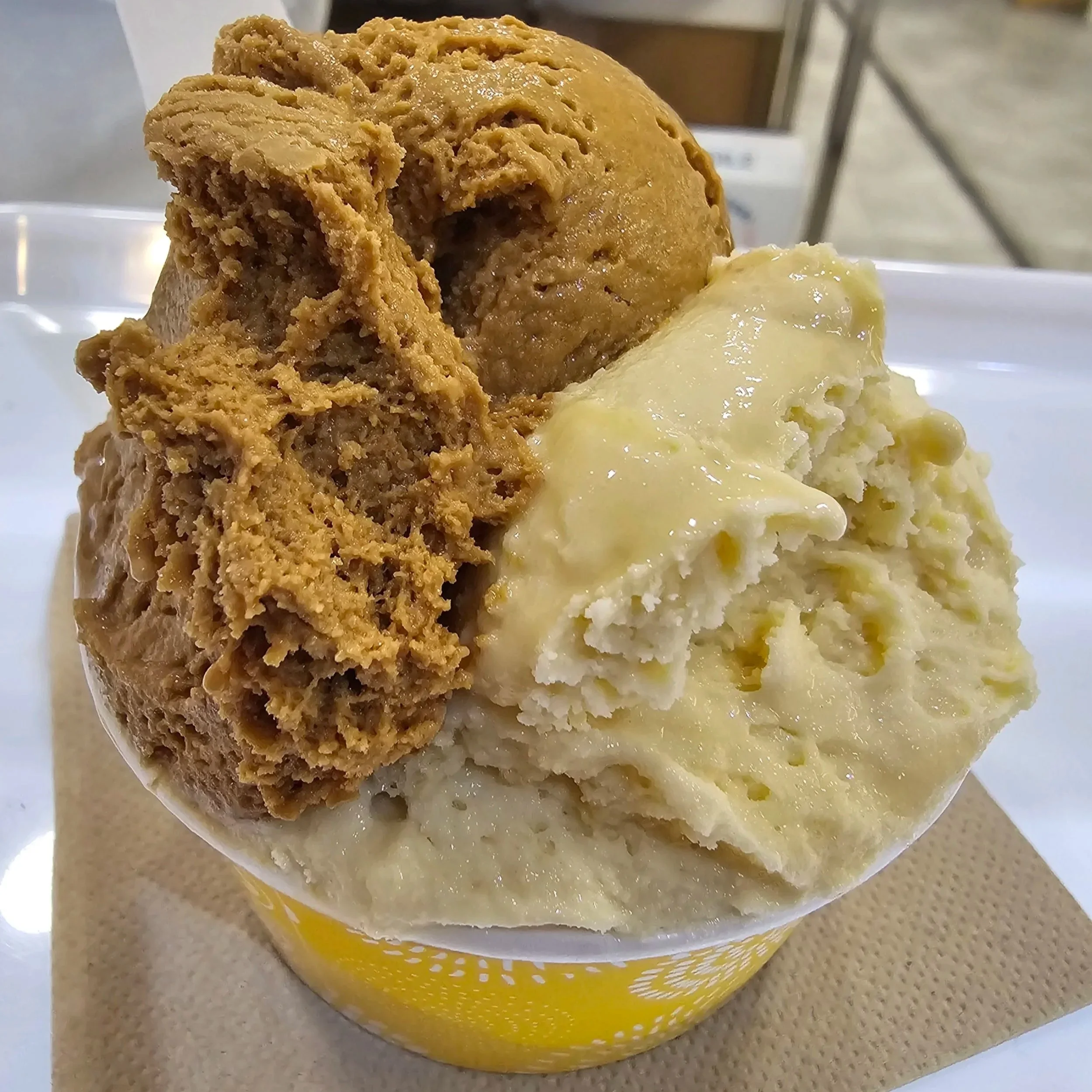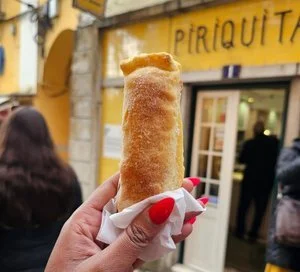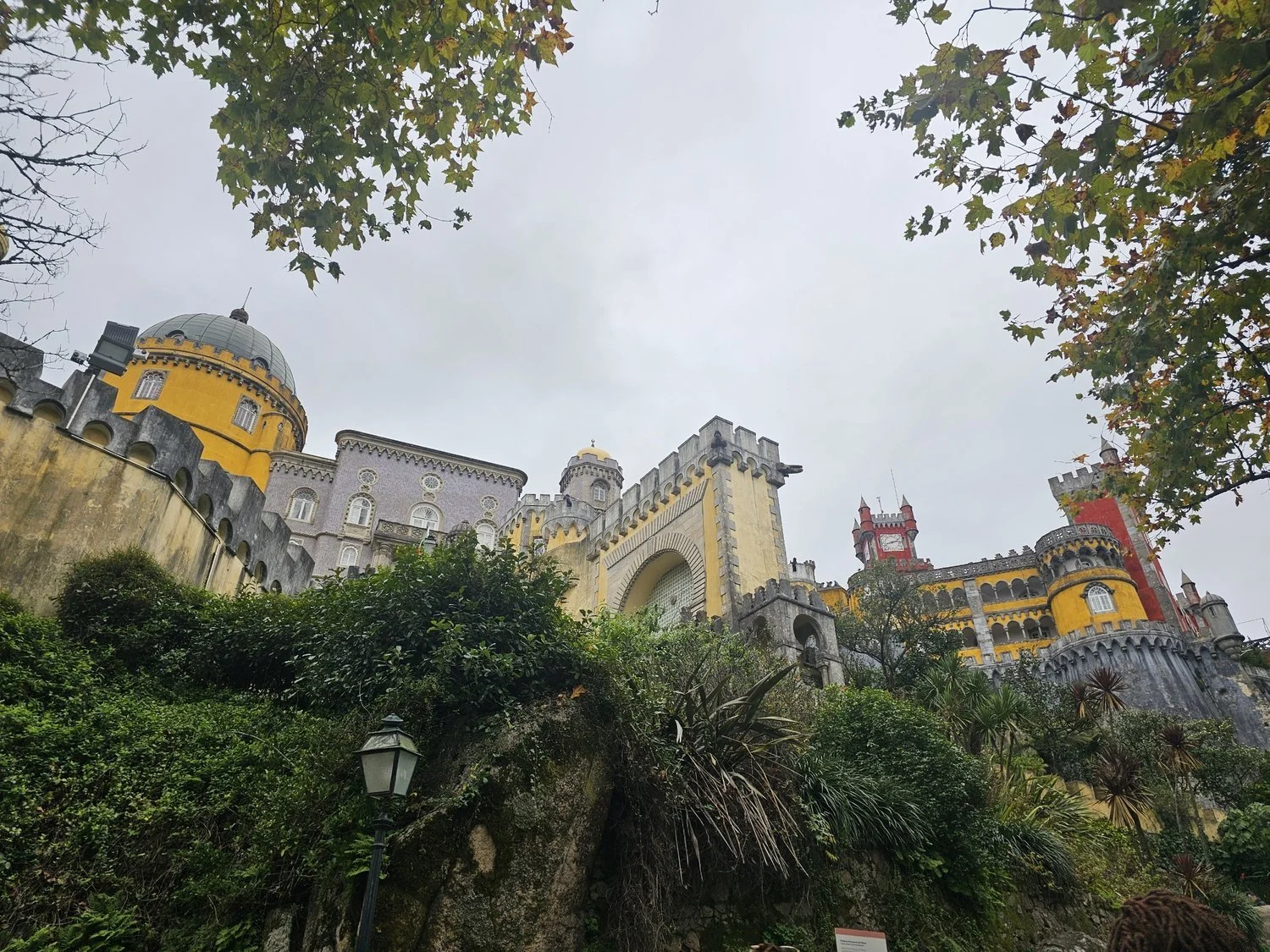48 Hours in Madrid: 6 Must-Try Food and Drink Spots While Sightseeing
Welcome to Madrid—a city where every corner tells a story, every bite is an experience, and two days just aren’t quite enough. Between its historic landmarks that seem to transport you through time and a vibrant food scene steeped in tradition, this Spanish capital is a feast for all the senses.
If you’re planning a quick trip, I’ve put together six must-try food and drink spots to visit as you explore the city. From cozy cafés and bustling markets to speakeasy-style bars, these places will give you a true taste of Madrid. Ready? Let’s dive in.
A Few Tips Before You Start
Arrive early at popular markets and brunch spots—they fill up fast.
Ask locals for dessert recommendations. That’s how we found our unforgettable churros stop!
Pace yourself. Everything looks amazing, but it adds up quickly.
Don’t skip the sweets. Spanish pastries and turrón are absolutely worth every bite.
We walked it off, of course, making a few stops along the way. We started with the Royal Palace, which is amazing to walk through, and then headed to the Almudena Cathedral, which is right opposite. There's so much to see, and Madrid is just screaming with history. I suppose you can say the same thing about most European capitals, but Madrid is just one for the books.
El Riojano: A Historic Start to Your Day
If you find yourself in Madrid early with luggage and no hotel check-in yet (been there!), a stop at El Riojano is a perfect way to fuel up before you begin your adventures. This bakery-café has been around since 1855, founded by a royal pastry chef. Step inside, and you’ll feel like you’ve traveled back to 19th-century Madrid, thanks to its original mahogany and marble counters gifted by the queen herself.
Despite its popularity, locals love this place just as much as tourists, so getting there early means snagging a seat in the cozy back area. The menu is extensive, with Spanish-style pastries, puff pastries, cakes, pies, desserts, sweets, and savory bites. My personal favorites? The tiramisu (arguably one of the best I’ve ever had), a savory (chicken) empanada, and the classic puff pastry bartolillo filled with cream. Don’t miss the honey-smothered pestiños either. The best plan? Order a variety and share so you can sample it all.
Mercado de San Miguel: Foodie Heaven in a Historic Market
After a quick nap to shake off travel fatigue, we headed to Mercado de San Miguel, a must-see for any foodie visiting Madrid. I even made a video walking through the whole experience, but here’s the gist: this market has everything you could dream of, from traditional paella to sweet treats, and even adventurous bites like squid-ink calamari sandwiches and the ever-popular dry-cured ham (jamón).
One standout? Pig ears, yes, really! The drink options are just as impressive, with wines and Aperol Spritz cocktails everywhere, perfect for sipping as you wander. The bao buns with all sorts of fillings were another unexpected highlight.
We got so distracted we skipped dessert there, opting instead for Italian-style gelato from La Dolcissimo Helado Y Más, rum and raisin and salted caramel flavors that were absolutely divine. On the way back, we made a few souvenir stops, where you can find everything from sidewalk stalls to shops selling regional specialties.
Cervecería Don Calamar: Brunch in Plaza Mayor
Day two started with brunch at Don Calamar, right in the heart of Plaza Mayor. Known for their fried calamari sandwiches, the menu here is much bigger, and you can see the dishes on display, super helpful when deciding.
The interior is small and charming, perfect for a quieter meal amid the buzz of the square. We loved the fried potatoes with jamón serrano and the classic Spanish omelette (which is surprisingly filling, half a portion was plenty!). If you plan to stay active after brunch, a cappuccino is a great choice, alongside a refreshing sangria.
Little touches like olive oil squeeze bottles added a distinctly European vibe. And a heads-up if you order grilled shrimp, they’re giant prawns with heads on. It’s not intimidating once you try them; they’re delicious but do require a bit of work.
Keep in mind, reviews here vary, so if you’re feeling adventurous, it’s worth trying other nearby brunch spots too.
Viscens Turrons: Sweet History in Every Bite
For a sweet energy boost while sightseeing, stop at Viscens Turrons. Turrón is a traditional Spanish nougat with a history going back over 500 years, made from honey or sugar, toasted nuts, and egg whites. It comes in chewy or crunchy forms and is especially popular around the holidays.
Viscens offers over 300 flavors, including seasonal varieties and alcohol-infused options like Baileys, gin and tonic, and margarita. The free samples and friendly service make this stop irresistible. I picked up Soft Almond Nougat and a festive Gingerbread flavor, perfect for gifts or a special treat.
Tacita de Plata: The Ultimate Churros Experience
If you’ve ever dreamed of the perfect churros dipped in rich, velvety chocolate, Tacita de Plata is your spot. This family-run business has become a Madrid institution, and their churros are a world apart from what you might find elsewhere.
They serve generous portions ideal for sharing, paired with thick, luscious hot chocolate—not the thin cocoa you might be used to. They even offer several chocolate varieties, including options for dietary restrictions. The churros themselves are crisp, fluffy, and warm—definitely deserving of a relaxed, sit-down moment.
If churros aren’t your thing, their menu also features doughnuts, waffles, and other treats. But trust me, the chocolate should be your priority here.
Calle 365: Madrid’s Hidden Speakeasy
Last but certainly not least, Calle 365 is a secret gem hidden behind what looks like an old door to a spirits shop. This speakeasy-style bar and discothèque is full of surprises. There are two entrances, and upon entry, you get a shot and a playfully presented cocktail (there’s usually a small cover fee). Sometimes you even need a password to get in!
When we visited, the place had a Brazilian theme, which extended to the food served by a food truck right on the dance floor, tacos and arepas, anyone? I tried the RANA “AMADO” cocktail from the secret menu, a refreshing blend of Larios 12 gin, violet and lychee syrup, white vermouth, lemon juice, and soda. It was an unforgettable experience and a fantastic way to cap off our Madrid food journey.
Madrid offers so much more than this, but if your time is tight, these six spots will give you a delicious snapshot of the city. After this trip, we headed to Ávila to explore more of Spain’s countryside, but Madrid was an incredible start.
Discovering Sintra, Portugal: A Magical Visit to Pena Palace and Downtown Dining
Is it Worth it Visiting Sintra, Portugal?
When planning your first—or next—trip to Portugal, don’t assume Lisbon is the only destination worth exploring. From Porto to Sesimbra, the country offers a diverse range of food, subcultures, climates, and activities. But one place stands out as a must-visit, just under an hour from the capital: Sintra!
Sintra, a charming town in the Lisbon district, captivates visitors with its enchanting atmosphere, historic palaces, lush landscapes, and the breathtaking Pena Palace. If you’re looking to immerse yourself in rich history and culture, Sintra has plenty to offer. Its stunning views set it apart from other regions in Portugal, and with easy access from Lisbon, adding it to your itinerary is a breeze.
And of course, don’t miss the downtown dining scene, where you can savor traditional Portuguese pastries, fresh seafood, and local delicacies that perfectly complement Sintra’s charm. I wouldn’t highlight this part of my trip if I didn’t think the food was worth experiencing!
The Two Must-See Castles in Sintra That Draw the Biggest Crowds
Perched atop the hills of Sintra, as I noted, Pena Palace is a vibrant, fairy-tale-like masterpiece that stands as one of Portugal’s most recognizable landmarks. With its striking colors, eclectic design, and breathtaking hilltop views, it draws visitors from around the world and holds the prestigious status of a UNESCO World Heritage Site.
Not far from it, the Moorish Castle (Castelo dos Mouros) tells a different story—one of ancient history and resilience. Built during the 9th century Moorish occupation, this fortress offers panoramic views of Sintra and the surrounding landscape, providing a glimpse into Portugal’s past while rewarding visitors with stunning scenery.
Pena Palace is not only a symbol of Portugal’s wealth during its era of overseas conquests but also a testament to a royal love story. King Ferdinand II transformed it into the magnificent boutique palace it is today for his first wife, Queen Maria II Tragically, she passed away in childbirth before its completion.
It was the first palace or castle I visited in Portugal, and it felt remarkably different from the Royal Palace of Madrid (Palacio Real de Madrid), which I had seen on a previous trip.
We managed to catch a glimpse of the Moorish Castle on the way to Pena Palace, so you’ll have so much to be excited about.
The Moorish Castle is an architectural gem that offers a unique glimpse into Portugal's medieval past. Located just a short walk from Pena Palace—though almost opposite in terms of public access—this ancient fortress provides an entirely different yet equally captivating experience, allowing visitors to explore the historical heart of Sintra from a new perspective.
As we walked along the entry pathway, we noticed the well-preserved food storage systems, offering a fascinating glimpse into how the castle's inhabitants survived centuries ago. Among the sights were cisterns, granaries, and storage rooms used by the Moors to store water, grain, and other essential supplies—an intriguing contrast to the fine dining tables found in Pena Palace!
Two other fascinating discoveries along the route are a collection of artifacts and burial sites.
The first includes artifacts unearthed during various excavations, such as tools, pottery, weapons, coins, and personal belongings. Each piece provides insight into the social and economic activities of the time, painting a vivid picture of daily life within the castle walls.
The second discovery is much more somber, particularly if you visit with a guide. You’ll learn about and see several family burial sites, including mass graves marked by simple stone markers or more elaborate tombstones. These graves offer a poignant reflection of the customs and rituals surrounding death during the medieval period, adding an eerie yet thought-provoking layer to the castle’s history. Out of respect, I did not take any photos of these sites.
How to Get to Pena Palace
We stayed in Cascais, just 30 minutes outside of Lisbon, making the drive to Sintra easy and convenient. However, if your budget allows, consider booking a tour for a more relaxed experience with valuable insights along the way. We chose Get Your Guide, which picked us up at 8 AM. The 45-minute drive to Sintra was a sightseeing experience in itself, transitioning from Lisbon’s suburbs to a town with its own unique climate and ecosystem.
Our driver was friendly and informative without being overly chatty. He shared useful tips for visiting Pena Palace, such as using the restroom before the uphill trek and taking advantage of a free path to view part of the Moorish Castle. He also recommended excellent lunch spots in downtown Sintra and made a stop at Cabo da Roca for family photos on the way back to Cascais. Tickets range from $45 to $80, with seasonal discounts available.
Recommendation: Lisbon: Sintra, Pena, Cabo da Roca Coast & Cascais Day Tour
On your way back to Lisbon, stop at Cabo da Roca, the westernmost point of mainland Europe. It can get chilly, but the breathtaking views make for unforgettable photos. Standing there, I half expected a dragon to fly by—it was truly magical!
Taking A Tour of the Inside of Pena Palace
The palace’s boutique hotel features stunning rooms and intricate architectural details. The free-flow tour guides visitors through all open sections of the castle, offering an up-close look at its grandeur. The kitchen and dining hall are particularly magnificent, showcasing beautifully preserved cupboards filled with tea sets, decorative ornaments, and even a sample royal menu from centuries past.
If you’re fascinated by medieval kitchens, royal dining traditions, historical cookware, and antique tea sets, Pena Palace is a must-visit. It offers a glimpse into a bygone era, yet many elements—like rustic copper pots and pans—remain relevant today, often resurfacing as sought-after vintage antiques.
The royal kitchen is one of the palace’s standout features, offering an authentic peek into medieval culinary traditions. These kitchens were massive, designed not only to accommodate the vast number of people they served but also to house large stoves and firepits used for cooking. The kitchen still contains original utensils, copper cookware, and intricately shaped baking molds, featuring designs like bees, mermaids, and pigs—a testament to the royal family’s high dining standards. The sample menu, written in French, suggests that regardless of a cook’s origins, only the finest culinary expertise was brought in.
What to Expect and Tips for Visiting Sintra
Pena Palace can get very crowded, so it’s important to be strategic about navigating the castle. While there are plenty of popular photo spots, two areas you must see—besides the kitchen—are:
1. The Royal Chapel – A breathtaking space with intricate details and stunning stained-glass windows. Take a moment to admire the craftsmanship up close.
2. The Wind Hallway – Designed to create a natural rush of air as you walk through, showcasing the architectural ingenuity of the time.
If you need a break, there are outdoor seating areas and a small rest area near the kitchen with restrooms and snacks. While it’s important to take your time exploring, I’d avoid visiting during peak summer months—the crowds can be overwhelming, and the heat makes it harder to enjoy the experience.
I visited in November, which meant fewer crowds, cooler weather, and a much more enjoyable visit. Plus, I didn’t have to worry about dehydration, and it was much easier to capture the perfect photo!
Exploring Downtown Sintra to Dine: Where to Go
Nestled at the foot of the Sintra Mountains, the town’s charming downtown area is a food lover’s paradise. After exploring Sintra’s castles and historic sites, you’ll likely be ready for a great meal. Following our visit to the medieval kitchens of Pena Palace and the ancient Moorish dwellings, we were eager to indulge in the local cuisine.
Downtown Sintra retains its unique microclimate and offers a diverse selection of savory and sweet dishes in a charming, quaint setting. If you visit on a rainy day (as we did), you’ll definitely want something warm and comforting. It is also a great spot for souvenir shopping, so be sure to add that to your itinerary.
As you walk along Sintra’s narrow streets, you’ll pass outdoor cafés (perfect on a nice day) and take in the mouthwatering aroma of local specialties. You’ll see a range of specilalties, from chorizo (Chouriço à Bombeiro), to traditional Sintra cheesecakes (Queijadas de Sintra).
Pro tip: Wear nonslip shoes! The limestone paving throughout Portugal can be very slippery.
Bacalhau na Vila
Visiting on a rainy day, we craved hearty comfort food and stopped at a popular restaurant specializing in salted codfish (bacalhau) dishes. Bacalhau na Vila is just as charming as the cobbled limestone streets of Sintra. Warm, welcoming, and cozy, the first thing you’ll notice is the ceiling—it resembles the inside of a cave. The restaurant has a television on, and most diners seem to be taking a break from their excursions, enjoying a meal and conversation before heading out again.
The first thing I’d recommend? Get the sangria pitcher—it was pretty good. The menu offers a wide selection, and the dining concept is tapas-style, so guests can sample multiple dishes.
I opted for a comforting bowl of Arroz de Peixe—a rich medley of rice, seafood broth, fish, and mussels. The portion was generous, and the balance of rice, broth, and protein was just right. I would have loved to try more dishes, but we were on the clock. There’s a reason this restaurant ranks 11th out of 304 restaurants in Sintra on TripAdvisor. I spotted several other dishes I’d love to sample (you’ll see them in the video), so next time, I’d definitely go back and take my time.
Tip: When heading to the restroom downstairs, be careful! The door opens immediately to a narrow staircase—it would be all too easy to take a hard, fast tumble.
Casa Piriquita
And for a sweet ending, Sintra is one of the best places in Portugal for traditional sweets, and your first stop should be Casa Piriquita—they have it all! This historic bakery, founded in 1862, even caught the attention of royalty. In fact, King Carlos I nicknamed the founder, Constância, “Piriquita” due to her petite stature—hence the name. Cute, right?!
One must-try item on the menu are the queijadas (Sintra-style cheesecakes), made with fresh cheese, sugar, eggs, flour, and a hint of cinnamon. These date back to medieval times and were among the king’s favorites. And yes, they actually contain cheese! They were my favorite as well.
Next on the list: Travesseiro—you’ll definitely come across these while researching Sintra. Developed in the 1940s by Constância’s granddaughter, it’s another Sintra signature. This puff pastry with almond paste filling is a local favorite. While I preferred the queijadas, these were decent. If I were taking them home, I’d probably add some fresh cream!
The bakery also sells pastéis de nata, but I’d recommend trying those in Lisbon first—I actually made a video about that and Portuguese desserts in general.
I hope this summary of my day in Sintra is helpful! I’ll be sure to document an update next time I go back. Watch the video for a clearer picture of what your downtime in Sintra could look like.







































